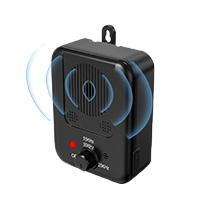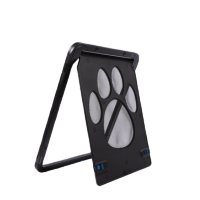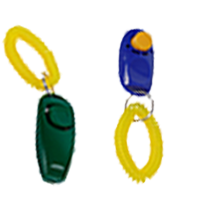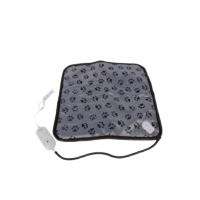Table of Contents
- 🌈Introduction
- 🎯Understanding the Basics of Clicker Training
- 🐕Key Advantages of Clicker Training
- 🦮Our Range of Pet Clickers
- 🐕🦺How to Train Your Dog with a Clicker
- 🐦Addressing Common Concerns and Misconceptions
- 🐱Conclusion: Start Your Clicker Training Today
- ❓Frequently Asked Questions about Clicker Training
Introduction
Clicker training has stood the test of time. Even in today’s high-tech world, this simple method continues to be one of the most effective ways to train dogs. At Koroz Pet, we’re proud to offer a range of clickers designed to make training easy, enjoyable, and rewarding for both you and your furry friend.
Understanding the Basics of Clicker Training
Clicker training is a popular method for teaching dogs using clear communication and positive reinforcement. Here’s how it works:
🎯 1. The Clicker as a Marker Signal
- What It Does: The clicker creates a consistent sound that tells your dog, “Yes, you did it right!”
- Why It Works: Unlike verbal cues that can vary in tone, the clicker always sounds the same, helping your dog understand exactly when they’ve performed the desired action.
🌈 2. The Power of Positive Reinforcement
- Reward-Based: Instead of punishing mistakes, clicker training focuses on rewarding correct behaviors.
- Building Trust: This method strengthens the bond between you and your dog, creating a positive training experience.
🛠️ 3. Shaping Behavior
- Step-by-Step: Clicker training allows you to break down complex behaviors into smaller steps.
- Marking Success: Every time your dog gets closer to the desired behavior, you click and reward, guiding them towards the final goal.
🏆 Key Advantages of Clicker Training
Clicker training offers several key benefits that make it an effective and enjoyable way to train your dog:
| Advantage | Benefits |
|---|---|
| Positive Reinforcement | – Builds Trust: Strengthens the bond between you and your dog. – Reduces Stress: Creates a calm, positive training environment. – Encourages Cooperation: Training becomes a fun activity for both. |
| Clarity and Consistency | – Clear Communication: The clicker provides a consistent signal that your dog understands. – Less Confusion: Reduces frustration for both you and your dog. |
| Versatility | – Wide Range of Uses: Effective for teaching basic commands, advanced tricks, and everything in between. – Suitable for All Dogs: Works for puppies and adult dogs, regardless of breed. |
| Precision and Speed | – Accurate Timing: Allows you to mark the exact moment your dog performs the correct behavior. – Faster Learning: Leads to quicker understanding and better results. |
| Improved Relationship | – Stronger Bond: Regular, positive training sessions deepen your connection. – Harmonious Living: A well-trained dog leads to a more peaceful home environment. |
🐾 Why Clicker Training Works
Clicker training is more than just a way to teach commands—it’s a method that enhances understanding and strengthens the relationship between you and your dog. It’s simple, effective, and creates lasting positive changes in your dog’s behavior.
Our Range of Pet Clickers
At Koroz Pet, we offer a variety of clickers to suit different training styles. Here’s a quick look at our top options:
| Clicker Type | Features |
|---|---|
| Clicker with Wrist Strap in different shapes | Ergonomic design, always within reach with wrist strap attachment. |
| Clicker with Whistle Function | A 2-in-1 tool that combines a clicker with a whistle for outdoor training. |
| Clicker with Finger Ring | Convenient finger ring design for quick access and control. |
How to Train Your Dog with a Clicker
Training your dog with a clicker is a step-by-step process that builds a clear communication system between you and your pet. By following these steps, you’ll be able to guide your dog through learning basic commands and more advanced behaviors.
Training Process Overview
Table to summarize the key steps of clicker training:
| Training Phase | Objective | Key Actions |
|---|---|---|
| Introduce the Clicker | Associate click sound with rewards | Click and treat repeatedly until the dog anticipates the reward. |
| Teach Basic Commands | Mark desired behaviors with a click | Click when the dog performs a basic command like “sit.” |
| Gradually Add Commands | Build on basic commands with new behaviors | Use the clicker to link simple steps into complex behaviors. |
| Phase Out the Clicker | Transition from clicker to verbal commands | Reduce clicker use, relying more on verbal cues and treats. |
1. Introduce the Clicker
Before diving into command training, your dog needs to understand that the click sound is a positive signal. This is known as “charging” the clicker.
- Step 1: Find a quiet place with minimal distractions.
- Step 2: Hold the clicker in one hand and a treat in the other.
- Step 3: Click the clicker once, then immediately give your dog a treat.
- Step 4: Repeat this process several times—around 10-15 repetitions per session—until your dog starts to look for a treat every time they hear the click.
Tip: Keep these sessions short and upbeat to maintain your dog’s interest.
2. Teach Basic Commands
Once your dog understands the clicker, you can start using it to teach basic commands like “sit,” “stay,” or “come.”
- Step 1: Choose a simple command, such as “sit.”
- Step 2: When your dog naturally performs the desired behavior (e.g., sitting), immediately click the clicker.
- Step 3: Follow the click with a treat, reinforcing the behavior.
- Step 4: Repeat this process until your dog consistently responds to the command.
Tip: Timing is crucial—click at the exact moment your dog performs the correct action to ensure they understand what they’re being rewarded for.
3. Gradually Add Commands
As your dog becomes familiar with the clicker, you can introduce more complex commands or tricks.
- Step 1: Start with a command your dog already knows, then add a new behavior. For example, teach “lie down” after “sit.”
- Step 2: Use the clicker to mark the precise moment your dog completes each step of the new behavior.
- Step 3: Gradually link these steps together into a full command or trick.
Tip: Break down complex behaviors into smaller, manageable steps to avoid confusing your dog.
4. Phase Out the Clicker
As your dog masters each command, you can begin to reduce reliance on the clicker, transitioning to verbal cues and treats alone.
- Step 1: Start by delaying the clicker and treat by a few seconds after the command is completed.
- Step 2: Gradually use the clicker less frequently, while continuing to use verbal praise and treats.
- Step 3: Eventually, rely solely on verbal commands and occasional treats for reinforcement.
Tip: Be patient during this phase—some dogs may need more time than others to transition away from the clicker.
🛠️ Addressing Common Concerns and Misconceptions
🧠 Myth: Clicker Training is Only for Tricks
It’s a common misconception that clicker training is only useful for teaching fun tricks like “roll over” or “play dead.” In reality, clicker training is a versatile tool that can be applied to all kinds of behaviors, from basic commands like “sit” and “stay” to more practical skills like leash walking and house training. The clicker’s ability to mark precise moments of correct behavior makes it an invaluable resource for teaching your dog anything you want them to learn.
🐕 Concern: My Dog is Too Stubborn or Aggressive
Some dog owners worry that clicker training won’t work for dogs with stubborn or aggressive tendencies. The truth is, clicker training can actually be particularly effective for these dogs. By focusing on positive reinforcement, you can help reduce aggressive behaviors and encourage cooperation.
- Stubborn Dogs: With consistent training, even the most stubborn dogs can learn to respond to the clicker. Patience and repetition are key.
- Aggressive Dogs: Clicker training helps to create a calm environment where aggressive dogs can feel secure and less threatened, leading to better behavior over time.
❓ Question: How Do I Deal with Clicker Training Challenges?
Like any training method, clicker training can present challenges. Here’s how to address some common issues:
- Timing Issues: If you’re struggling to click at the right moment, practice without your dog first. Click when a ball hits the ground or when a light turns on. This will help you get the timing right when working with your dog.
- Lack of Progress: If your dog isn’t responding as expected, consider breaking down the behavior into even smaller steps. Click and reward for each tiny improvement, and gradually build up to the full behavior.
- Distractions: If your dog is easily distracted, try training in a quieter environment and gradually introduce more distractions as your dog becomes more confident.
- Clicker Dependency: Worried that your dog will only behave when you have a clicker? As your dog masters commands, you can start phasing out the clicker and rely more on verbal cues and treats.
🔄 Remember: Every dog is unique, and what works for one may not work for another. Be patient, stay consistent, and adapt the training to suit your dog’s individual needs.
🚀 Conclusion: Start Your Clicker Training Today
Clicker training is more than a method; it’s a journey. It’s about building a bond, communicating effectively, and having fun along the way. Whether you’re a newbie or a seasoned trainer, our range of clickers at Koroz Pet has something for you. Ready to get started? Explore our selection and find the perfect clicker for you and your pup!
🐾 Frequently Asked Questions about Clicker Training
❓ Q: Is a Clicker Good for Dog Training?
A: Absolutely! A clicker is a highly effective tool for dog training because it provides a clear and consistent signal that helps your dog quickly understand which behaviors are being rewarded. It’s great for teaching both basic commands and advanced tricks.
❓ Q: How to Train a Dog with a Clicker?
A: Start by associating the clicker with a reward. Click, then immediately give your dog a treat. Once your dog understands that the click means a reward is coming, you can use it to mark desired behaviors like sitting or staying. The key is to click at the exact moment your dog performs the correct behavior, then follow up with a treat.
❓ Q: What Are the Disadvantages of Using a Clicker in Dog Training?
A: While clicker training is generally very effective, it does require consistency and precise timing, which can be challenging for some people. Additionally, some dogs might become overly focused on the clicker or treats, making it important to eventually phase out the clicker and rely on verbal cues.
❓ Q: Can You Use a Clicker for Bad Behavior?
A: No, a clicker should not be used to correct bad behavior. It is designed to mark positive behaviors that you want to reinforce. For addressing bad behavior, it’s better to use other training techniques that discourage unwanted actions without resorting to punishment.
❓ Q: Do Clickers Hurt Dogs’ Ears?
A: No, clickers do not hurt dogs’ ears. The sound they produce is not too loud, but it is distinct enough for your dog to hear it clearly. It’s important to use the clicker in a way that doesn’t startle or scare your dog, which can be avoided by keeping the clicker at a reasonable distance from their ears.
❓ Q: What Age Should You Start Clicker Training?
A: You can start clicker training as early as 7-8 weeks old. Puppies are capable of learning simple commands and associating the clicker with rewards at a very young age. However, clicker training is effective for dogs of all ages, so it’s never too late to start!





-2-1400x788.webp)